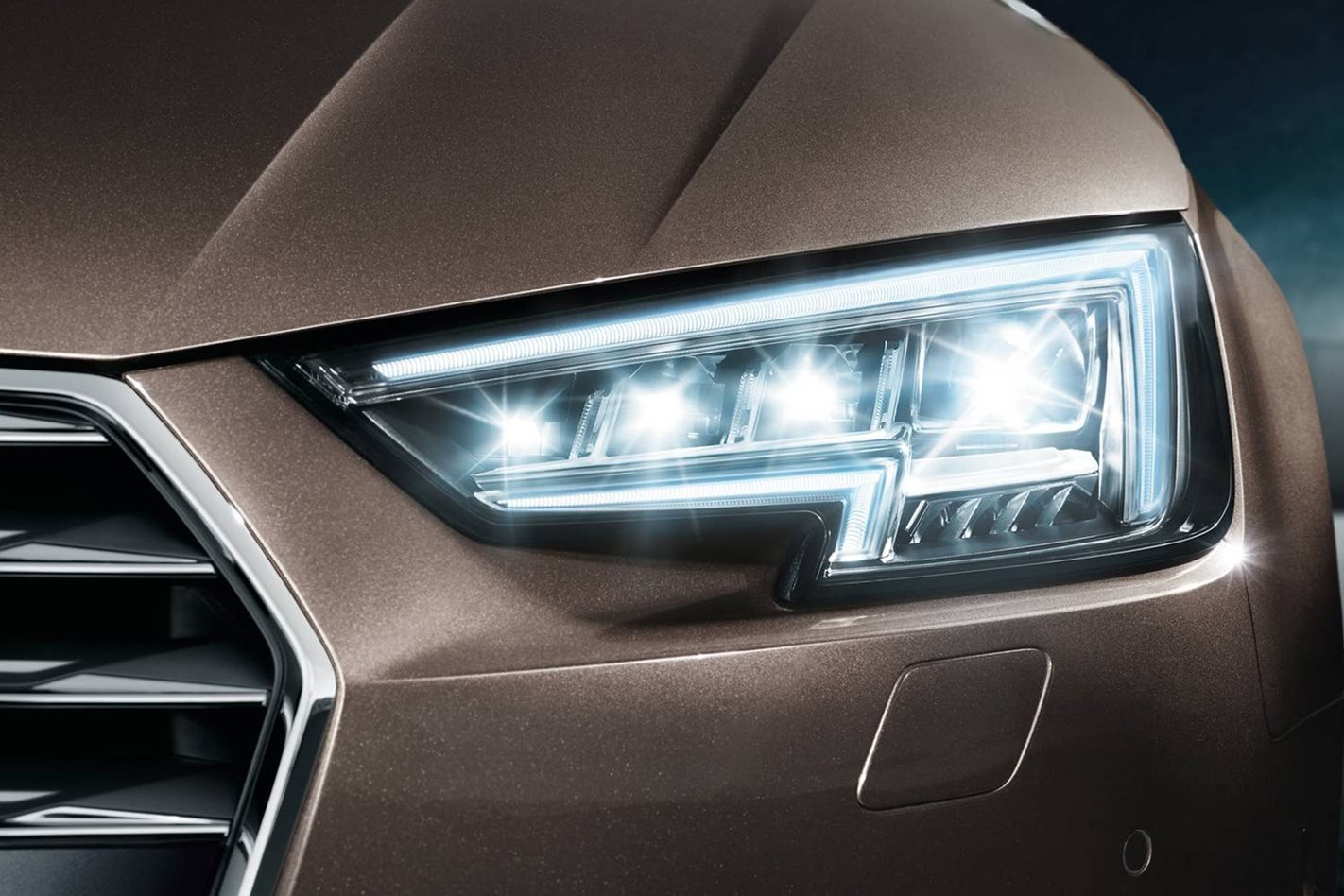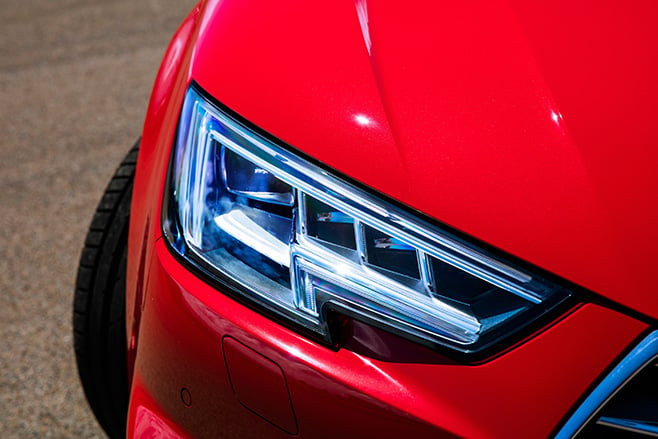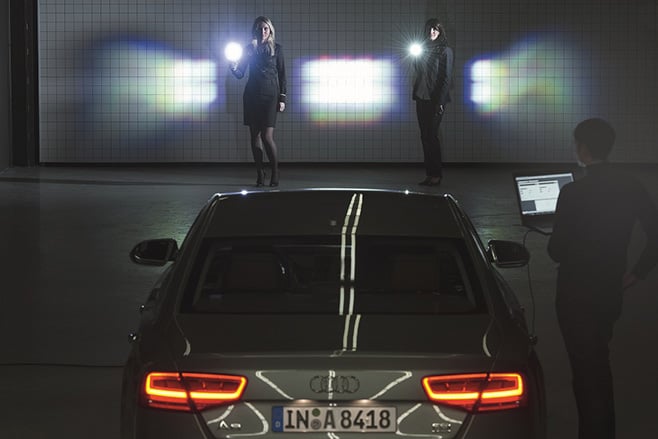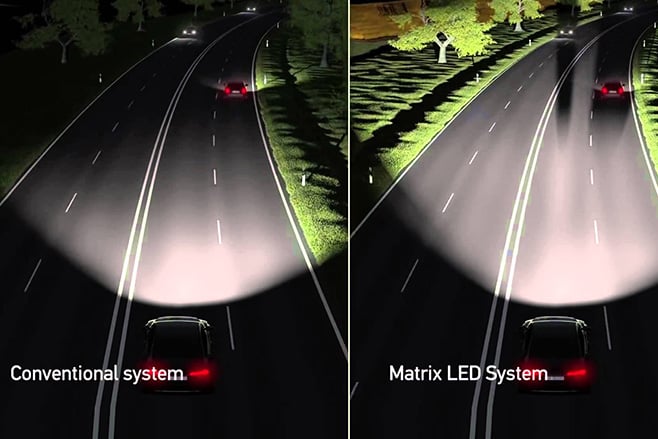
Audi first introduced its Matrix LED headlight technology on its flagship model, the Audi A8, in 2013, but this year a derivative of the system became more accessible to car buyers – as a $1700 option on the latest-generation A4 sedan.
We used the launch of the even-newer Audi A4 Avant wagon variant to conduct a more extensive test of the Matrix LED system.
Our test conditions were perfect: a winding road in the country; pitch black.
The Matrix beam is activated by switching the headlight mode to Automatic.

Driving along on a stretch of traffic-free bitumen, the system applies full power to the beam. It creates an impressive spread of light noticeably brighter than xenon headlights, providing a field of vision that’s so wide and tall it even picked out the upper branches of trees.
As we encountered approaching and preceding vehicles, the Matrix system revealed why it’s more advanced than the (still useful) auto high-beam found on numerous, variably-priced cars that simply switches automatically between high and low beam when a front-facing light sensor detects other vehicles.
In the Matrix LED system a camera mounted behind the A4’s rear-view mirror detects the headlights or tail-lights of the vehicles and relays this information to an electronic ‘responsive’ control unit.
It then manipulates the Matrix Beam’s 24 small, dedicated lighting diodes – 12 per headlight – to first dim the lighting ‘zone’ affecting the other motorist before blanking it out completely as their vehicle gets closer to ensure they aren’t blinded.

The system features eight ‘fingers’ of light, and you can easily notice how each individual finger switches on and off to keep the other vehicle in a patch of darkness – while the rest of the fingers keep significant portions of the road ahead and the roadside brightly illuminated.
It looks like a bar graph done Vivid style and is quite an uncanny sight – one we never quite got accustomed to even after a lengthy night time drive. Yet it would also be the first option box we would tick if we were buying an Audi A4.
The system can deal with multiple vehicles, illuminating only the gaps between them, though we didn’t get to experience this during our test drive.
To ensure A4 drivers don’t get dazzled themselves, the Matrix Beam will also reduce the intensity of the roadside-focused fingers when reflective road signs are detected.

The A4’s system isn’t quite as advanced as the A8’s version, which in conjunction with optional Night Vision can produce a strobe warning light – flashing three times – if a pedestrian is in dangerous proximity to the vehicle.
The A4’s Matrix headlights do, however, borrow the ability to peer around a corner before the driver has even turned the steering wheel – using predictive route data if the A4’s multimedia navigation system is in use.
For urban areas the Matrix Beam can still be left in Automatic, though here the higher levels of ambient light instruct the system to revert to a dipped beam – though the lighting area is broadened to help pick out more detail and potential hazards to the side of the road.
Mercedes offers an equivalent system, called Active Multibeam LED, on some models, while BMW offers a less-advanced system called Selective Beam.
Holden will bring the technology into the mainstream later this year as an option on the new-generation five-door Astra.
The updated Audi A3 will also later this year become the most affordable Audi to offer Matrix LED. Audi Australia says about 30 per cent of A4 buyers are currently taking up the Matrix LED option, which seems like bright thinking to us.




